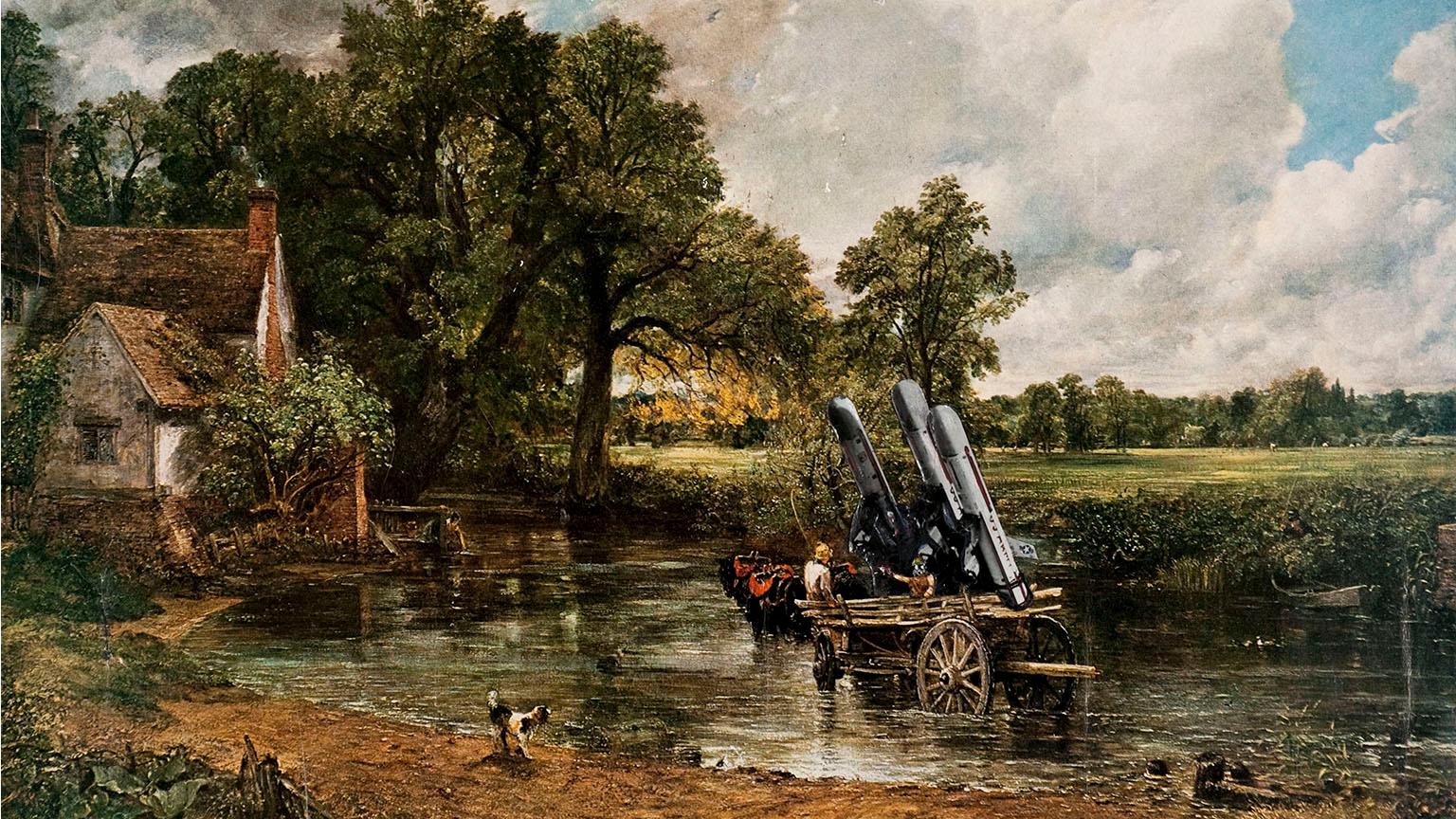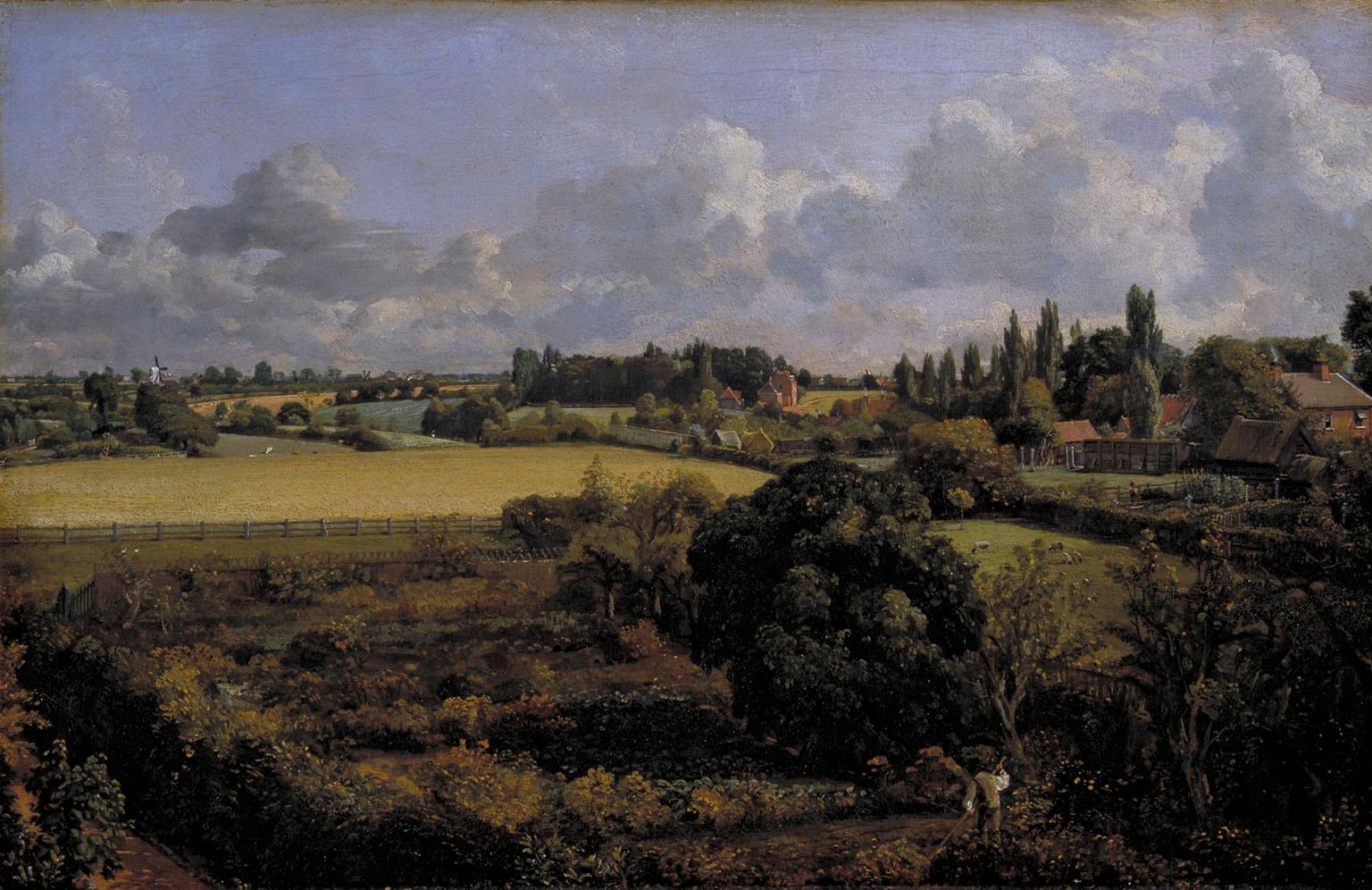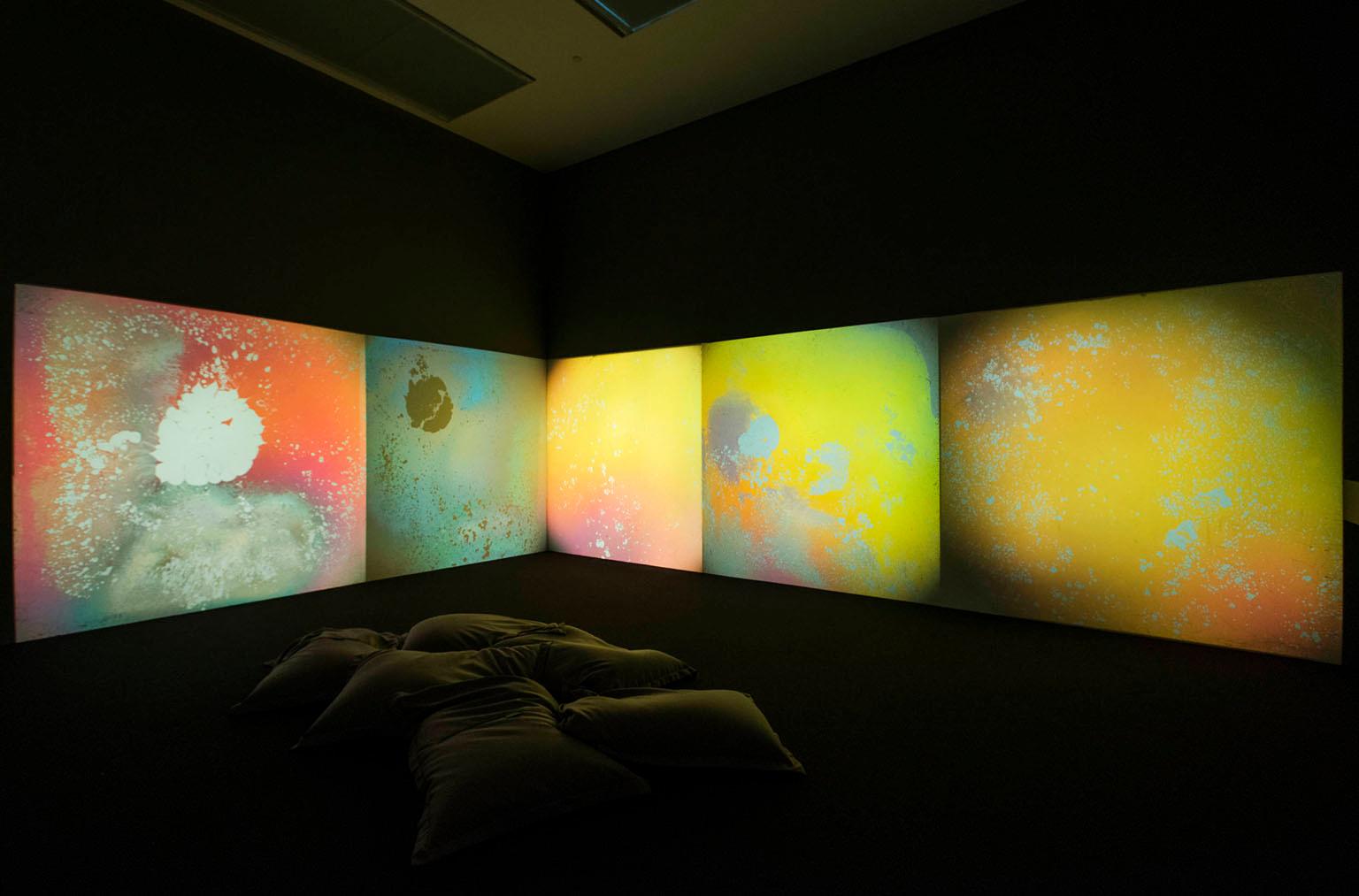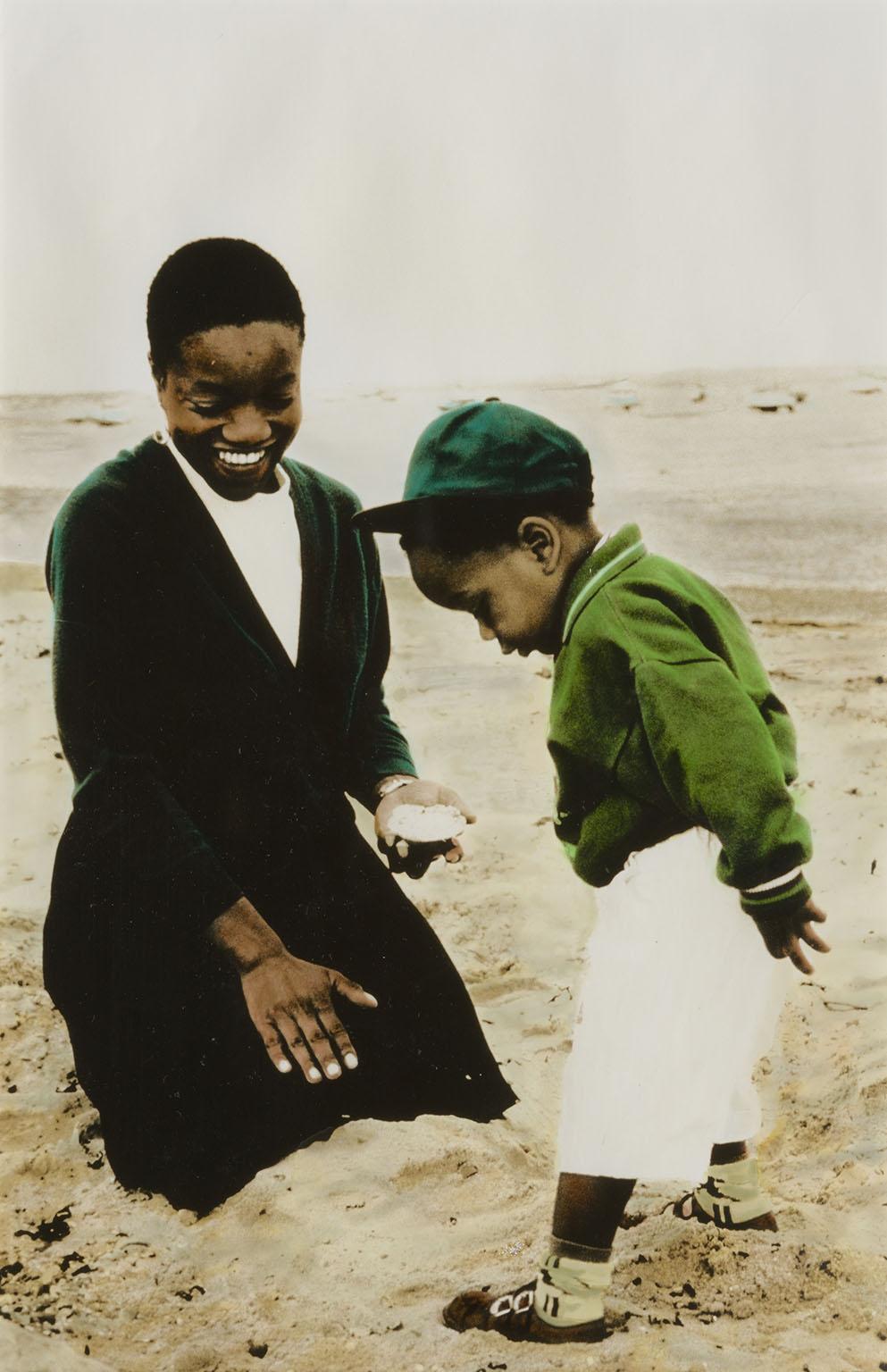The shifting nature of British landscapes in art

David Trigg explores artists’ relationships with materiality, meaning and the effects of human activity on the British landscape, taking in exhibitions in Bristol and Liverpool.
A version of this article first appeared in the summer 2022 issue of Art Quarterly, the magazine of Art Fund.
The British landscape has inspired artists for centuries, with some of the nation’s greatest painters making their name with portrayals of rurality. In the 18th and 19th centuries, landscape became the preeminent genre of British painting as artists such as Richard Wilson, Thomas Gainsborough, JMW Turner and John Constable made it their own. Though new concerns and approaches emerged in the 20th century, landscape has proven to be an inexhaustible subject that continues to hold artists in thrall. This summer, the Royal West of England Academy (RWA) presents ‘Earth: Digging Deep in British Art 1781-2022’, a retelling of the landscape story that moves away from familiar accounts to focus on how artists past and present have been captivated by the materiality of the Earth itself, from its diverse topography and rich geological resources to the wealth of agriculture and horticulture that its soil sustains, to the increasing damage inflicted on it by human activity. The remarkable range of artistic responses are as diverse as the landscape itself.
In the late 18th century, Gainsborough abandoned academic traditions for sublime landscapes, emphasising the importance of imagination and individual expression while conveying nature’s awesome power. His dramatic Romantic Landscape with Sheep at a Spring (c1783) depicts shepherds with their flock amid towering rocks in a bucolic setting. Though inspired by visits to the West Country and Lake District, the scene is entirely fabricated, painted in Gainsborough’s studio using products of the earth for reference: coal for the rocks, broccoli for the trees. While Constable found Gainsborough’s landscapes ‘soothing, tender and affecting’, he worked directly from the landscape, pursuing realism over idealised representations. His closely observed compositions revolutionised landscape painting and revealed a remarkable understanding of rural life. His most famous works depict his home county of Suffolk, a region synonymous with the artist, known as ‘Constable Country’. Capturing the view from his parental home in East Bergholt, Golding Constable’s Kitchen Garden (c1815) shows his father’s kitchen garden and the farmland beyond where workers are harvesting wheat. Combining horticulture and agriculture, it celebrates the earth as the source of food and emotional wellbeing.

Scenes of pastoral abundance such as this were common in the late 18th and early 19th centuries, coinciding with a period of intense transformation in farming methods, technology and land ownership. Turner’s Cassiobury Park: Reaping (c1807), which shows men and women reaping on the estate of the 5th Earl of Essex, conveys a sense of people in harmony with the landscape. However, it belies the realities of the Enclosure Acts, whereby common land once used by all was appropriated for private farmland. Though the transition from subsistence to market-driven agriculture was essential for the needs of a growing population, many workers were left impoverished and dependent on wage labour. Mechanisation further disenfranchised them from the land and many moved from the country into towns and cities. The reality for those left behind was captured by the rustic naturalism of artists such as George Clausen. Painted at Childwick Green, near St Albans, his Winter Work (1883-84) depicts peasant labourers topping and tailing swedes for sheep fodder. Their gruelling work is conveyed by a subdued palette that subtly captures the dull winter light.
Britain is a land formed by centuries of human activity, by landowners, foresters, builders, town planners and others
The enclosure of common land provides a context for the industrial-scale extraction of land resources through mining and quarrying that has adversely affected many landscapes. Artists drawn to such sites include Samuel John Lamorna Birch, whose Morning Fills the Bowl (1926) depicts Lamorna Cove and quarry in Cornwall. Viewed through imposing pinnacles of granite, the sun-drenched scene contrasts the site’s natural beauty with the damage wrought by industry. Ostensibly attracted by the light and colour of Cornwall’s china clay pits, Laura Knight painted the large watercolour Men Working in a China Clay Pit (1912-14) at a site near Bodmin, showing shovelling workers in a vast crater. This industry has blighted Cornwall’s landscape; for every tonne of china clay mined, five tonnes of waste was produced, resulting in mountainous spoil heaps nicknamed the ‘Cornish Alps’. Later, during the Second World War, Graham Sutherland recorded the Cornish tin mine of Geevor, near Land’s End. Spending three weeks underground in 1942, his subterranean scenes reveal a fascination with the mine’s complex shapes, colours and textures, which he renders as womb-like spaces with dramatic lighting and complex perspective.
Many of the works in ‘Earth’ remind us that Britain is a land formed by human activity and intervention. Moulded over centuries by shepherds and farmers, builders, foresters, landowners, engineers, town planners and architects, barely an acre of ‘natural’ country remains. The face of Britain today is as much the result of clay, granite, chalk and the Gulf Stream as of cities, industry and motorways. Human intervention in the landscape fascinated Carol Rhodes (1959-2018), whose aerial views record the anti-idylls of our industrialised nation. With a disturbing beauty, her small bird’s-eye paintings of anonymous airports, factories, roads and other developments reveal a landscape scarred by modernity. Another 20th-century artist finding charm amid the concrete and asphalt is Edward Chell, whose paintings focus on peripheral landscapes along motorway verges. Chell describes these verdant spaces, filled with grasses and wildflowers, as Britain’s ‘largest unofficial nature reserve’, one that hardly anyone notices, though through which most have travelled. In the mid-1960s, artists entered into physical dialogues with the natural world as Land Art radically expanded notions of landscape. Some artists brought nature into the gallery while others transformed the land outside through ploughing, digging or constructing earthworks. Less invasive approaches were developed by Richard Long, whose ephemeral works often take the form of walks. Also known for site-specific mud drawings made directly onto gallery walls, Long’s new commission for ‘Earth’ will adorn the RWA with silt from the nearby River Avon. Created spontaneously by splashing or smearing, these dramatic pieces evoke prehistoric cave art and current ecological concerns, as well as the history of painting, in which artists, for centuries, have used earth pigments dug from the ground.
In a time of climate crisis, many artists are preoccupied with environmental issues, challenging viewers to consider how their actions impact the landscape. The devastating effects of coastal erosion are addressed in Julian Perry’s disquieting paintings, which feature uprooted trees, caravans teetering on clifftops and houses hanging in mid-air. For Perry, the eroding shorelines of East Anglia are emblematic of a world in crisis, pointing to the looming spectre of widespread climate breakdown. The erosion of Britain’s coastlines is, of course, a natural phenomenon; the area around the Suffolk village of Dunwich, which was painted by Turner and where Perry has a home, was once a mile inland, but has been steadily corroded by longshore drift over centuries. But, with polar ice caps melting and seas rising, erosion is accelerating like never before and, as Perry’s landscapes demonstrate, soft geology, combined with extreme weather events, has calamitous effects. These works have been described as ‘Anthroposcenic’, a term coined by cultural geographer David Matless to explore art reflecting processes characteristic of the Anthropocene – the idea that our present geological era is defined by the impact of human activity. Arguably, the Anthropocene began with the Industrial Revolution, the ugliness and misery of which William Blake famously decried in his 1804 poem And did those feet in ancient time, in which England’s ‘dark Satanic mills’ are contrasted with its ‘green and pleasant land’. The work of British-Nigerian artist Yinka Shonibare highlights links between the Industrial Revolution, colonial exploitation of Africa and environmental havoc. Shonibare is showing a new sculpture in his Earth Kids series: child-sized figures dressed in the artist’s signature Dutch batik fabrics, who highlight aspects of colonial and planetary destruction, such as a boy carrying a fishing net packed with waste plastic. Though weighed down by detritus, the boy is described by Shonibare as ‘a symbol of action and agency’, suggesting that it’s not too late to make changes to current patterns of consumption in order to create a sustainable future for our planet.
The radical energies of 1960s counterculture gave rise to the Land Art movement and other environmental practices
Environmental degradation is addressed in Yuri Pattison’s sculpture Sun[set] Provisioning (2019). On a flatscreen monitor, an endlessly evolving sunset is generated in response to data from an air-quality monitor: the greater the levels of carbon dioxide and other impurities, the more vibrant and intense the scene. The work alludes to spectacular sunsets caused by increased levels of human-generated pollutants – a phenomenon resulting in sublime beauty, yet linked to the devastation of climate-driven forest fires. Pattison’s mesmerising work is displayed at Tate Liverpool in the current exhibition ‘Radical Landscapes’, which explores our individual and collective connections to rural environments through expanded notions of landscape. Here, the countryside appears not only as a site of artistic inspiration but also as a locus for ideas of freedom, mysticism, experimentation and rebellion. Exploring obscured histories, colonial legacies and issues of identity, it presents a more complex and diverse account of British rurality.

The radical energies of 1960s counterculture that gave rise to the Land Art movement and other environmentally conscious practices are channelled through Gustav Metzger’s Liquid Crystal Environment (1965/2005), an immersive psychedelic installation that dramatises societal transformation through heat-sensitive liquid crystals, which change colour as they are warmed and cooled. Metzger was perturbed by the destructive potential of technology, especially as it pertained to modern warfare. Recognising the threat of environmental annihilation, he became active in the Campaign for Nuclear Disarmament and was briefly imprisoned for encouraging non-violent civil disobedience. Cold War anxiety over the nuclear threat to Britain’s landscape is expressed in Peter Kennard’s collage, Haywain with Cruise Missiles (1980), which subverts Constable’s famous painting by inserting nuclear warheads into the countryside scene. American nuclear weapons were once stored at Suffolk’s RAF Lakenheath, where they came perilously close to being detonated when a plane crashed there in 1956. Nuclear weapons were also stored at RAF Greenham Common in Berkshire, which famously became a focal point for anti-nuclear protests in the 1980s with the Women’s Peace Camp. The women’s activities are documented in Tina Keane’s experimental video In Our Hands, Greenham (1982-84), which emphasises collective action and feminist empowerment by layering imagery of silhouetted hands and spiders over footage from the peace camp. Also on show in Liverpool is an appliqué banner that Thalia Campbell created for the protest, decorated with motifs including bolt-cutters, tents, doves of peace, and a circle of women joining hands.
Trespass reveals how the countryside has been a locus for both artistic production and debates around civil freedoms
In 1985, hundreds of women from Greenham Common were imprisoned for criminal trespass. In ‘Radical Landscapes’ the theme of trespass reveals how the countryside has been a locus for both artistic production and arguments around civil freedoms. One display highlights The Kinder Scout Mass Trespass of 1932, described by its leader, Benny Rothman, as ‘a demonstration for the rights of ordinary people to walk on land stolen from them in earlier times’. In a coordinated trespass, hundreds of ramblers travelled to the Peak District, defying landlords and the law. As a landmark civil protest, it spotlit the class-based conflict over land access rights and led to the formation of the National Parks – an affirmation of the British landscape as part of our common democratic heritage. It is in this context that James Walker Tucker’s painting Hiking (1936), which depicts three young women ramblers overlooking a rural village while poring over a map, should be viewed. Tucker’s modern realist style is reminiscent of posters promoting the exploration of Britain’s countryside, which, encouraged by motoring organisations as well as railway and bus companies, emerged as one of the decade’s great preoccupations.

Tucker’s portrayal of adventurous women presents an image of female liberation, but also reinforces the perception that British landscapes are white spaces, predominantly inhabited by white people. In many of her works, Turner Prize-nominated artist Ingrid Pollard has powerfully challenged the assumption that white people more naturally belong to the countryside. Oceans Apart (1989) is a collection of hand-tinted photographs depicting Black Britons, including her own family, enjoying the English seaside, yet the charming scenes are tempered by references to colonialism and slavery in the Atlantic world. In the age of Covid, access to green spaces has become important to us all, but as more people connect with the landscape, many people still feel unwelcome in rural environments. Experiences of racism in Devon left the young British-Ghanaian artist Tanoa Sasraku feeling like an outsider. Her large flag Swaling Gorse (2018) draws inspiration from Celtic heraldry and the regimental flags of the Fante people in colonial Ghana. Constructed from layers of stitched newspaper, it is decorated with stylised motifs representing fire and smoke, which refers both to the rural ecological management practice of controlled burning and the desire to figuratively burn down the legacies of empire, the source of much countryside wealth as well as prejudice.
Britain’s landscape is a complex site of innumerable cultures and histories, the product of thousands of different actions and decisions made in the past. As the painter and art critic Christopher Neve wrote in his 1990 book Unquiet Landscape: Places and Ideas in 20th-Century British Painting, ‘the land is the foundation on which everything stands; the ground of all action and all feeling’. It is a place of abundance, precarity and preciousness whose ongoing story is told by artists in myriad ways. As these exhibitions in Bristol and Liverpool demonstrate, the countryside and attitudes towards it are never static. Artists show us nature, but in doing so hold a mirror to the unfolding human story, which has been and continues to be instrumental in shaping and transforming the land, whether for good or ill.
Each issue of Art Quarterly contains previews, reviews, long reads and artist interviews relating to current and upcoming exhibitions at museums, galleries and historic houses across the UK, as well as news on the impact of Art Fund’s charitable programme.
Become an Art Fund member to receive four issues of Art Quarterly per year and join a community of 130,000 art lovers enjoying free or reduced-price venue entry, and up to 50% off exhibitions, with their National Art Pass. Already a member? Renew your membership today.
Art Fund is the national fundraising charity for art in the UK. Donate to Art Fund and help develop the collections of museums, galleries and historic houses, place works of art of national significance in public collections, fund training and career-development opportunities for museum professionals, and ensure as many people as possible can access and enjoy art.